In today’s globalized tech landscape, offshore development teams are essential for companies looking to tap into specialized skills and scale efficiently. But working across time zones and cultures introduces unique challenges, especially when it comes to communication. Establishing clear, effective communication with your offshore team ensures project alignment, improves productivity, and fosters trust. This guide explores strategies, tools, and best practices for communicating effectively with offshore teams, helping you build a strong collaborative environment despite geographical distances.
Why Communication Matters in Offshore Development
Communication is the backbone of any successful project, especially in offshore development. Poor communication is one of the main reasons offshore projects fail, with research from the Project Management Institute revealing that 56% of project failures are attributed to ineffective communication (PMI, 2023). With teams dispersed across countries, establishing solid communication practices can make the difference between a successful, cohesive project and one plagued with misunderstandings and delays.
Understand the Cultural Context
One of the most significant hurdles in offshore team communication is cultural differences. Effective cross-cultural communication begins with understanding the norms, work ethics, and communication styles in the country where your offshore team is based. According to a Deloitte study, companies that invest in cross-cultural training experience a 30% improvement in collaboration and productivity (Deloitte, 2022).
- Tip: Research the cultural expectations of your team’s location. For example, direct communication may be standard in the U.S., while some Asian cultures may prefer a more reserved approach.
- Tools: Consider using resources like Hofstede’s Cultural Dimensions or scheduling cross-cultural training sessions to better understand how your offshore team communicates.
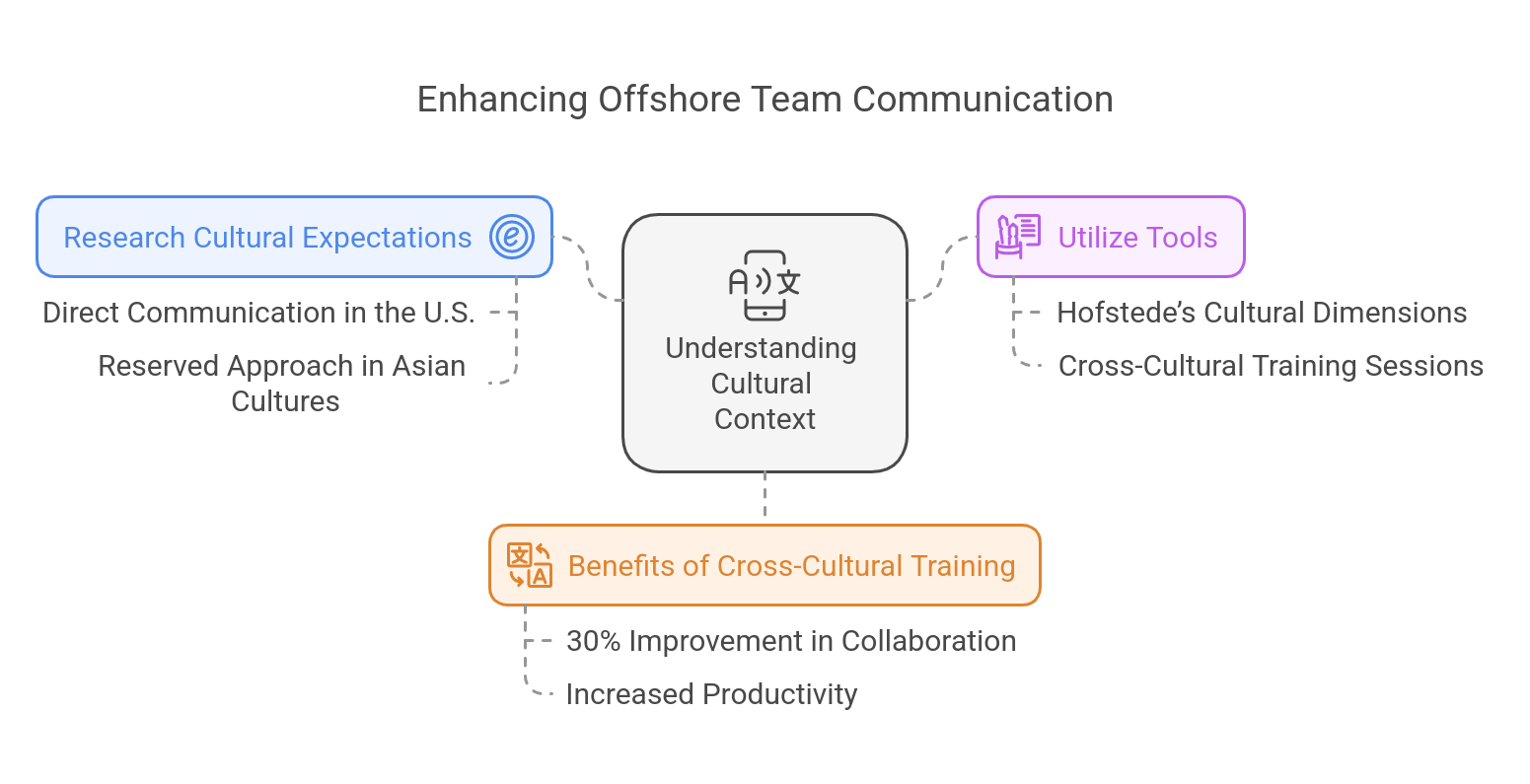
Set Clear Expectations with Documented Processes
Creating clear documentation is a cornerstone of effective communication, especially when working with offshore teams. Documented processes help avoid misunderstandings, as everyone has a written reference for project objectives, timelines, and workflows.
For example, Basecamp reports that teams using structured communication documentation experience 30% fewer errors in project execution (Basecamp, 2022). Use task management tools like Asana or Monday.com to assign clear responsibilities, set deadlines, and create a single source of truth for project requirements.
- Best Practice: Develop an internal guide that outlines key processes, project goals, and role expectations.
- Benefits: This reduces ambiguity, ensures alignment, and makes onboarding smoother for new team members.
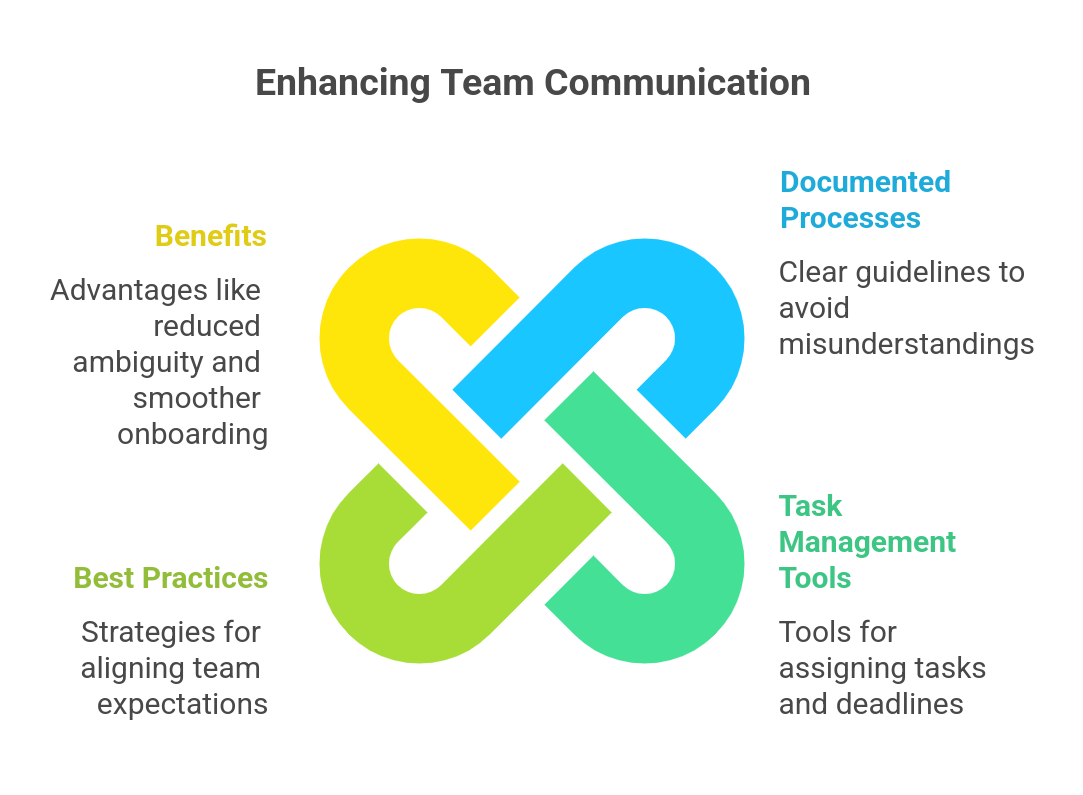
Choose the Right Communication Tools
Selecting the right tools can greatly impact the efficiency of communication with your offshore team. With remote work becoming the norm, there’s no shortage of collaboration tools available. According to Buffer’s State of Remote Work report, 80% of remote teams prefer tools that integrate project management with communication (Buffer, 2023).
Here are a few top tools to consider:
- Slack for instant messaging and real-time communication.
- Zoom or Microsoft Teams for video conferencing, especially for weekly project updates.
- Asana or Jira for task and project management, helping both onshore and offshore teams stay aligned.
- Tip: Create designated channels or chat groups for specific projects and tasks to avoid clutter and ensure easy access to relevant information.
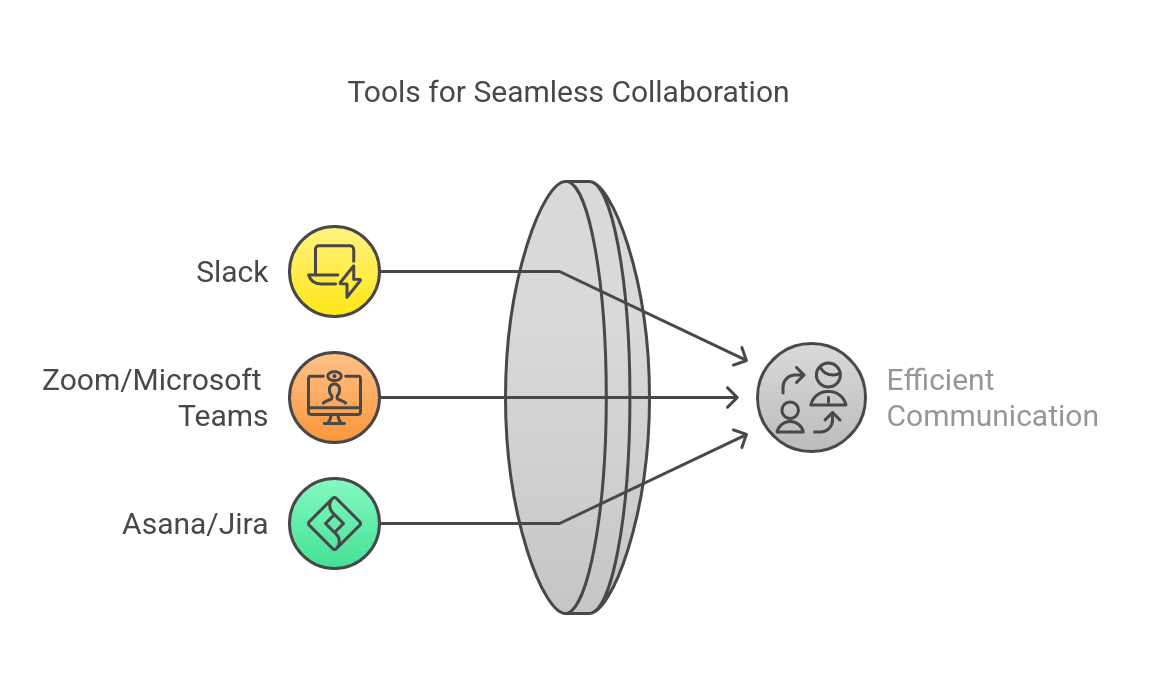
Establish Regular Meetings for Project Alignment
Scheduling regular meetings is crucial to keeping offshore teams aligned with project goals. Given that 74% of remote workers report that routine check-ins enhance their engagement and alignment with company goals (Gallup, 2023), incorporating a structure for consistent updates is essential.
Types of Meetings to Consider
- Daily Standups: Quick 15-minute meetings to discuss progress and address immediate blockers.
- Weekly Progress Meetings: Allow team members to discuss broader challenges and review progress.
- Monthly Project Reviews: Reflect on successes, address concerns, and adjust future plans.
Challenges: Time zones can complicate meeting scheduling. For example, if your onshore team is in the U.S. and your offshore team is in India, aim for times that overlap (e.g., early morning in the U.S. and late evening in India).
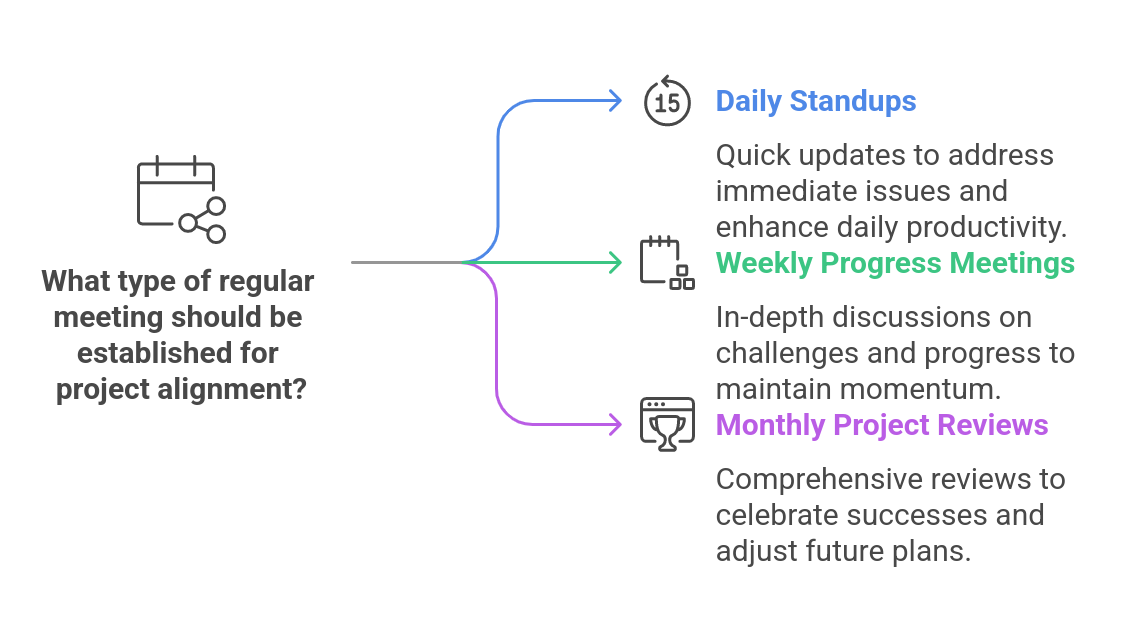
Use Visual Aids and Language Translation
Visual aids can bridge communication gaps and help clarify complex concepts, especially for team members who may not be native English speakers. Diagrams, flowcharts, and video demos can make a huge difference in ensuring everyone understands the material, reducing the need for lengthy explanations.
- Data Insight: 63% of remote workers find visual aids significantly improve understanding and engagement in project discussions (Harvard Business Review, 2023).
- Solution: Use tools like Miro for visual collaboration or Loom for screen recordings to explain complex tasks. Google Translate or Microsoft Translator can also be used to overcome language barriers.
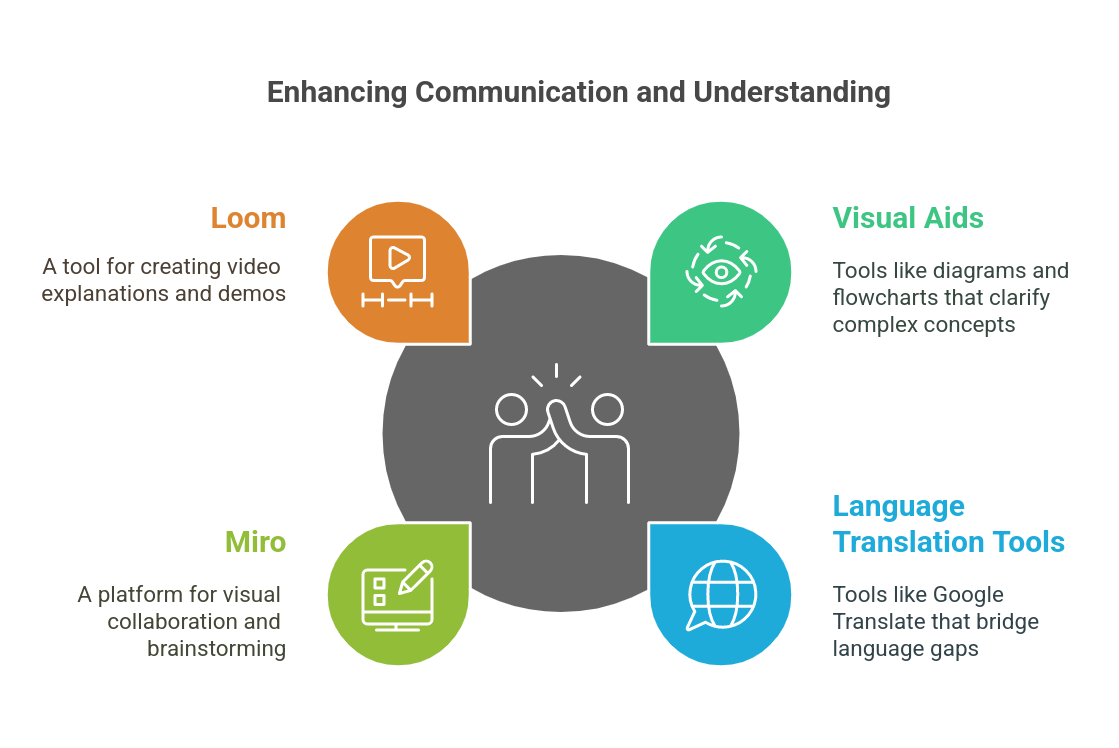
Track Progress and Provide Feedback Regularly
In offshore projects, providing timely feedback is essential. When team members work remotely, they may miss out on subtle cues from face-to-face interactions that help gauge performance. This can lead to misunderstandings or unresolved issues if feedback is not delivered clearly.
- Feedback Statistics: A survey from Gallup reveals that 67% of remote employees are more engaged when they receive frequent feedback from managers (Gallup, 2023).
- Approach: Implement weekly check-ins for quick feedback on tasks, and conduct monthly or quarterly reviews to evaluate project milestones.
Tip: Encourage two-way feedback so offshore teams can communicate challenges they face. Open channels for feedback improve trust and foster a collaborative work culture.
Closing Gaps with Effective Offshore Communication through AquSag
Establishing effective communication practices with your offshore team is essential to achieving successful project outcomes. AquSag Technologies offers robust support for businesses seeking smooth, structured communication with their offshore teams. Our team helps implement tailored communication frameworks, ensuring both cultural and operational alignment between onshore and offshore members.
With over a decade of experience in building and managing offshore teams, AquSag assists in:
- Setting up structured communication protocols.
- Facilitating cross-cultural training for seamless integration.
- Providing customized solutions to meet your team’s unique communication needs.
For more insights or to learn how we can optimize your offshore team’s communication, contact AquSag Technologies today.